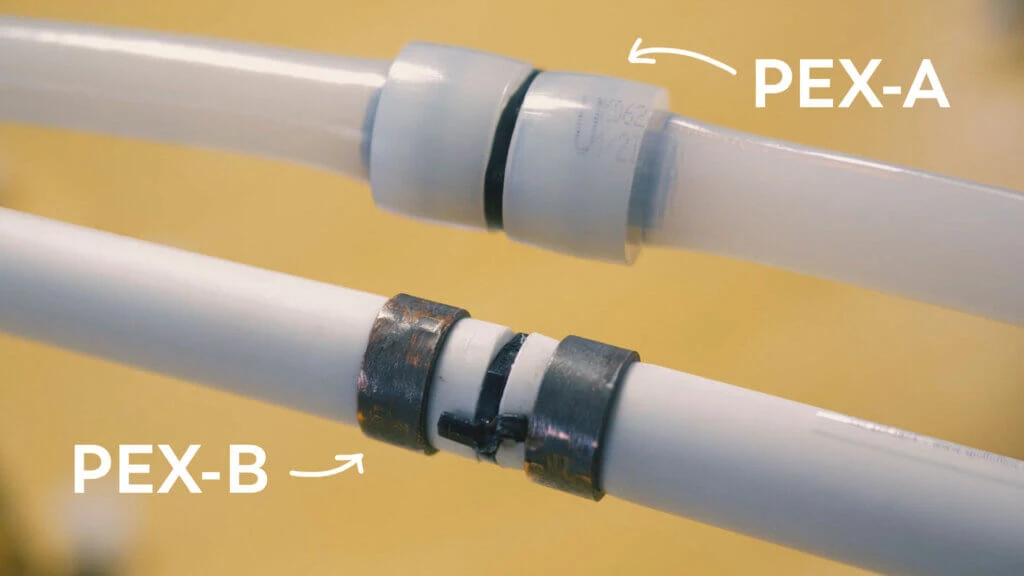When it comes to plumbing, you might have heard a lot about PEX Pipe GB-T 18992. But with two main types—PEX A and PEX B—how do you know which one is better for your needs? Let’s dive into the details and help you make an informed choice.
Introduction
PEX Pipe GB-T 18992, short for cross-linked polyethylene, has become a popular choice in both residential and commercial plumbing systems. Its flexibility, resistance to scale and chlorine, lower shipping costs, and ease of installation make it a go-to material. But with PEX A and PEX B on the market, many homeowners and contractors often find themselves asking: which one is the better option?
Understanding PEX Tubing
Before we get into the specifics of PEX A and PEX B, let’s clarify what PEX is. This versatile piping material is often used in water supply lines, radiant floor heating systems, and even in some irrigation setups. Its ability to expand and contract without breaking makes it ideal for a range of applications.
PEX A vs. PEX B: An Overview
Key Characteristics of Each Type
Both PEX A and PEX B are produced through different manufacturing processes, which lead to distinct characteristics.
- PEX A is made using the Engel method, which results in a highly flexible tube.
- PEX B, on the other hand, is produced using the Silane method, leading to a slightly stiffer product.
Manufacturing Processes
- PEX A: The Engel method involves cross-linking the polymer chains while the material is still in its molten state, which maximizes flexibility.
- PEX B: The Silane method cross-links the polymers after the pipes have been formed, which can affect flexibility and strength.
PEX A
Description and Properties
PEX A is known for its superior flexibility and ability to bend without fittings, making installation simpler and quicker.
Benefits of PEX A
- Greater Flexibility: Easier to work with, especially in tight spaces.
- Freeze Resistance: Expands when frozen, which can prevent bursting.
PEX B
Description and Properties
PEX B is slightly less flexible than PEX A but is generally more affordable and widely available.
Benefits of PEX B
- Cost-Effective: Usually cheaper than PEX A, making it a budget-friendly option.
- UV Resistance: Better for outdoor applications due to its resistance to ultraviolet light.
Flexibility and Ease of Installation
When it comes to flexibility, PEX A clearly has the edge. Its ability to bend without fittings allows for smoother installations, especially in retrofitting scenarios. PEX B, while more rigid, is still relatively easy to install, but it may require more fittings.
Resistance to Damage
Freeze Resistance
Both types have some level of freeze resistance, but PEX A’s ability to expand makes it more forgiving in cold temperatures. If a PEX Pipe GB-T 18992 freezes, it’s less likely to burst compared to PEX B.
UV Resistance
If you’re considering outdoor applications, PEX B is generally better suited for exposure to sunlight. PEX A can degrade under prolonged UV exposure, making PEX B a preferable option for outdoor uses.
Cost Considerations
When it comes to cost, PEX B typically wins. It’s generally less expensive to purchase and install. However, consider the long-term benefits of PEX A, such as reduced risk of damage due to freezing, which might save you money on repairs down the line.

Applications Best Suited for Each Type
Ideal Situations for PEX A
- Indoor plumbing systems where flexibility is a significant advantage.
- Areas prone to freezing temperatures, such as attics and basements.
Ideal Situations for PEX B
- Outdoor applications where UV resistance is crucial.
- Budget-sensitive projects where initial costs need to be minimized.
Local Building Codes and Regulations
It’s essential to check local building codes before deciding on a type of PEX. Some jurisdictions may have specific requirements regarding the type of materials allowed in plumbing systems, which could affect your choice.
Expert Opinions and User Experiences
Many plumbers and contractors have their preferences, often based on their experiences. Some swear by PEX A for its flexibility and installation ease, while others prefer PEX B for its cost-effectiveness. User feedback often highlights the ease of installation as a significant factor, especially in DIY projects.
Conclusion
In the battle of PEX A versus PEX B, the best choice really depends on your specific needs. If you prioritize flexibility and freeze resistance, PEX Pipe GB-T 18992 A may be your best bet. However, if you’re looking for a cost-effective solution with UV resistance, PEX Pipe GB-T 18992 B might be the way to go. Assess your project requirements, budget, and local building codes, and you’ll find the right fit.
FAQs
- What are the main differences between PEX A and PEX B?
- PEX A is more flexible and freeze-resistant, while PEX B is more cost-effective and UV-resistant.
- Is one type of PEX more durable than the other?
- Both are durable, but PEX A offers better freeze resistance, whereas PEX B has better UV resistance.
- Can I use PEX A and PEX B together?
- Yes, they can be used together, but make sure to use compatible fittings.
- Which type is better for outdoor use?
- PEX B is generally better for outdoor applications due to its UV resistance.
- How do installation costs compare for PEX A and PEX B?
- PEX B is usually cheaper to install, but PEX A may save you money in the long run due to fewer repairs from freezing.